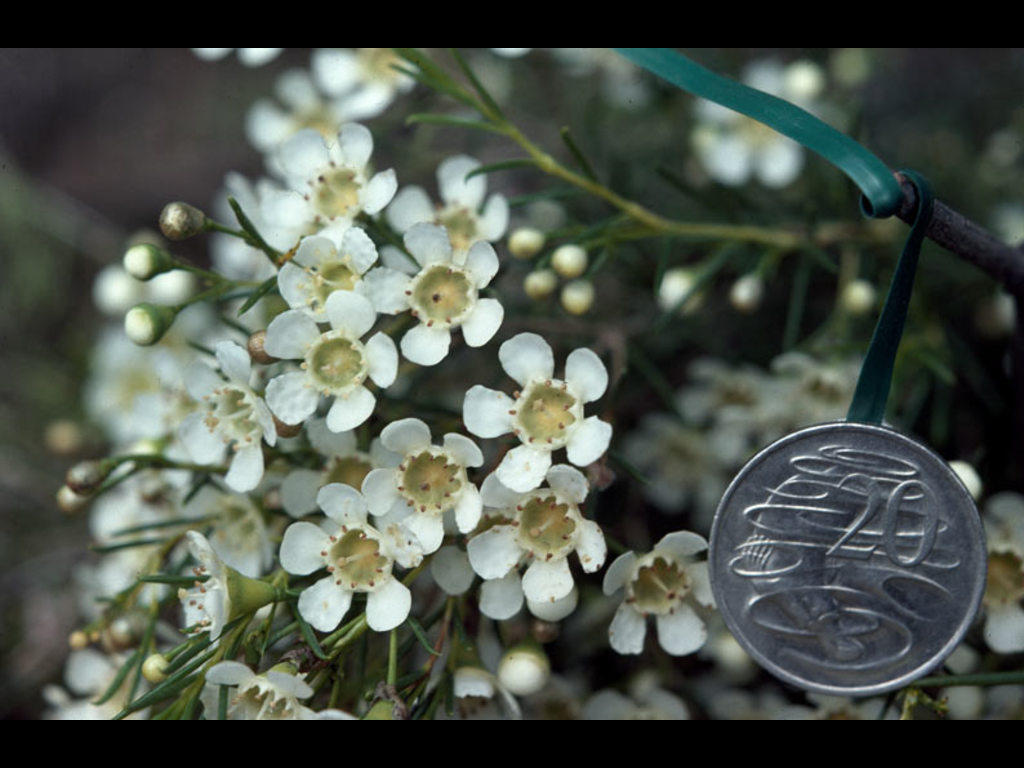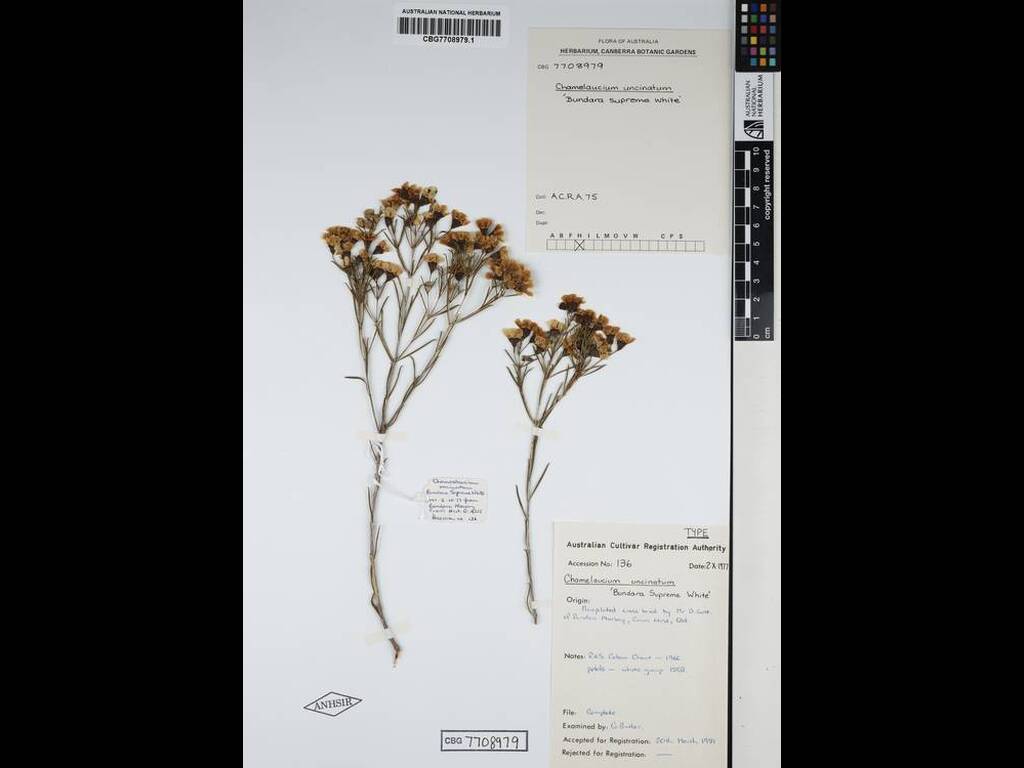Chamelaucium uncinatum 'Bundara Supreme White'
- File Number
- 136
- ACRA Field Book Number
- 75
- Registration Date
- 19/03/1981
- Application Received
- 02/09/1977
- Family
- Myrtaceae
- Cultivar Name
- Chamelaucium uncinatum 'Bundara Supreme White'
- Origin
- ORIGIN:Chamelaucium 'Bundara Supreme White' was the result of a manipulatedcross between two plants of C. uncinatum. The female parent was a whiteform of the species and the male parent was a seedling raised from thiswhite flowered form. The cross was performed by Mr D Gust of BundaraNursery, Crows Nest, Queensland and was done with intention of raising aprolifically flowering plant for the cut flower market.The applicant was MrD Gust of Bundara Nursery, Crows Nest, Queensland.Cultivar fist received bythe Authority 2 September 1977.
- Characteristics
- The habit of this cultivar is similar to the normal Chamelaucium uncinatum. The flowers are pure white in colour. Diagnosis: This shrub has leaves and flowers slightly smaller than the normal form of Chamelaucium uncinatum. The shrub is very dense and the flowers are borne on the branch terminals. The original shrub was bred with the cut flower market in mind. In the first year 2.2kg of blooms were cut and in the second year 6.8kg were cut from the plant. This crop rate was recorded at Bundara Nursery. The cultivar differs from other white forms of C. uncinatum in that it produces a heavier crop of flowers.
- Cultivation
- Tolerates a wide range of growing conditions and soil types as long as they are well drained. Widely grown in suitable conditions throughout Australia. Drought tolerance good, frost tolerant if given some protection, light frosts are known to damage flowers and young growth.
- Publication
- Australian Cultivar Registration Authority (1982), Australian Plant Cultivars. Australian Plants 11(91): 322
- Colour Coding
- RHS Colour Chart 1966.petals: white 155B.
- Propagation
- Cuttings from semi-firm new growth
- Applicant Name
- D Gust
- Uses
- As part of a mass planting or mixed in a shrubbery, or as a spectacular feature plant. Cut flowers.
- Availability
- Unknown
- ANBG Accession Numbers
- ACC136, ACRA75, CBG7708979
- NSL ID
- -

